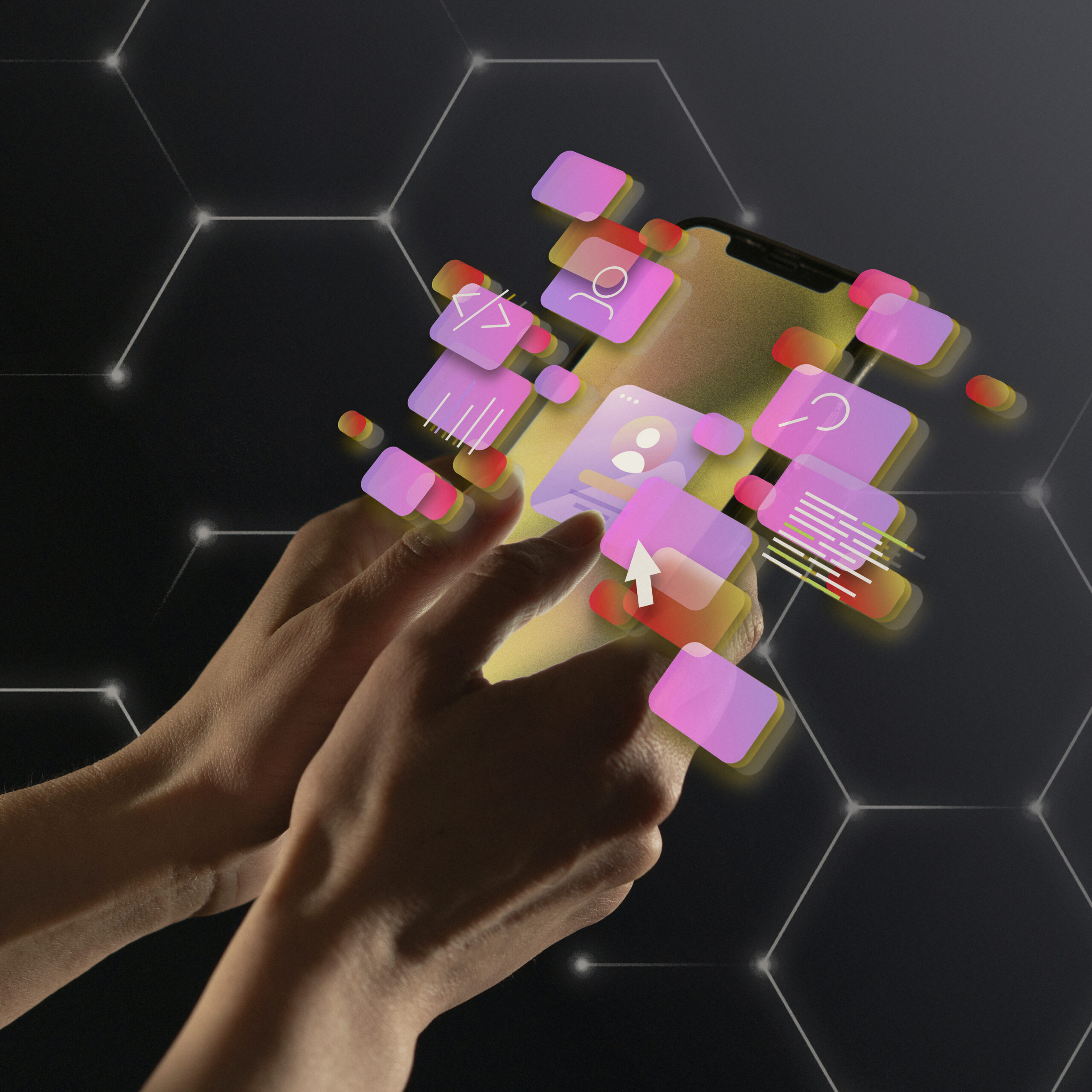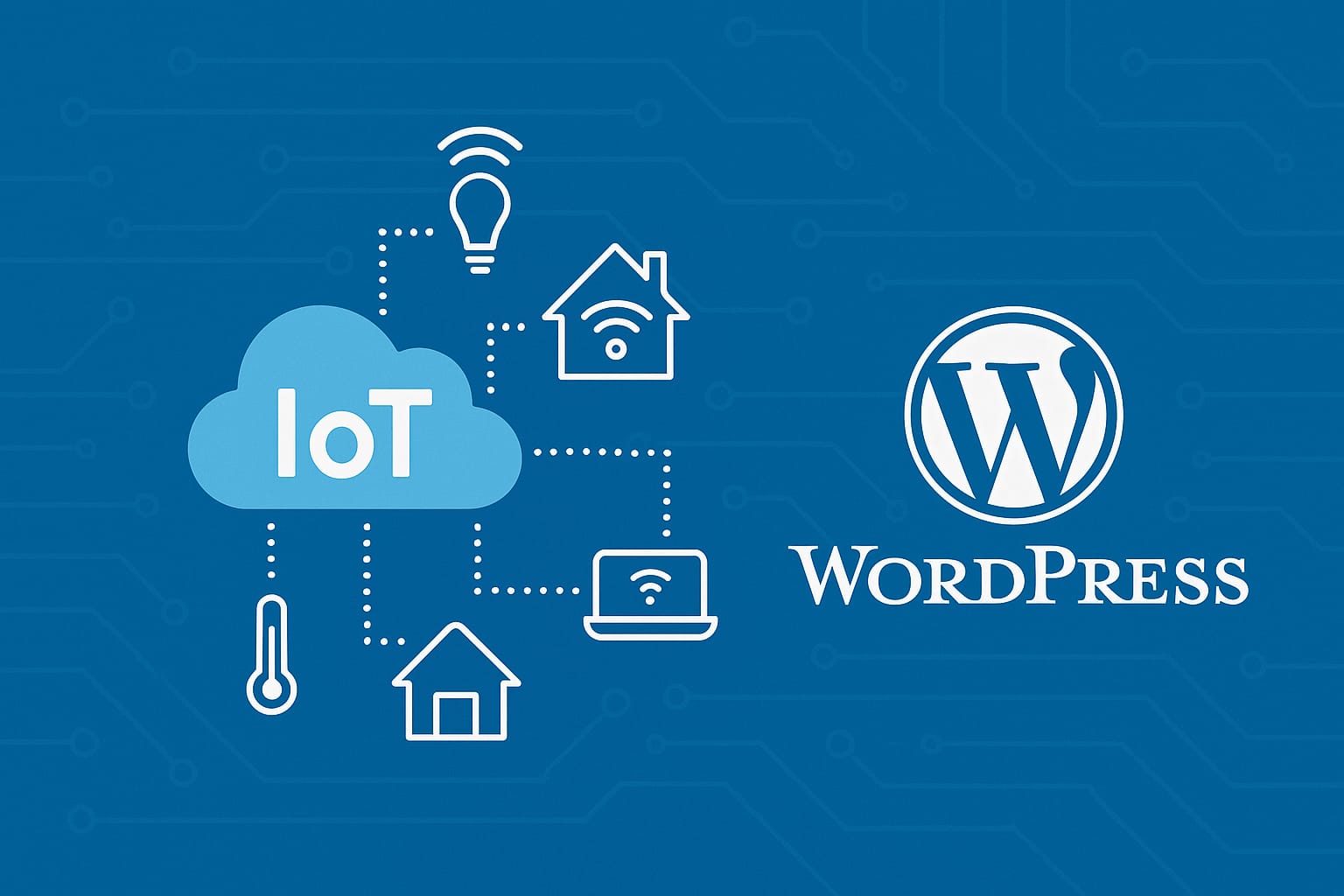WordPress and Internet of Things: Connect IoT Devices Easily

The Internet of Things (IoT) is transforming the way we interact with technology. From smart homes and wearables to industrial systems, IoT enables physical devices to collect and exchange data over the internet. On the other hand, WordPress is the most widely used content management system (CMS), powering over 40% of websites globally. The combination of WordPress and Internet of Things opens up exciting opportunities for developers, businesses, and enthusiasts to create interactive, real-time experiences.
In this blog, we’ll explore how to connect IoT devices to a WordPress website, the benefits of integration, practical steps, real-world examples, and best practices for a smooth and secure setup.This blog is a part of our Service Web designing.
Table of Contents
What is the Internet of Things (IoT)

WordPress and Internet of Things integration refers to connecting a network of interconnected physical devices—equipped with sensors, microcontrollers, and communication hardware—that collect and share data by sending it to the cloud or a server, enabling seamless interaction between websites and smart devices. Common IoT applications include:
- Smart thermostats and lighting systems
- Fitness and health trackers
- Industrial automation systems
- Smart agricultural tools
- Security and surveillance systems
In a WordPress and Internet of Things setup, IoT devices are typically connected via Wi-Fi, Bluetooth, Zigbee, LoRa, or cellular networks, enabling them to transmit data continuously or at scheduled intervals.
Why Integrate WordPress and Internet of Things
There are several compelling reasons to integrate WordPress and IoT:
- Real-Time Data Visualization: Use WordPress dashboards to display real-time data from sensors or smart devices using charts and graphs.
- Remote Monitoring and Control: WordPress can serve as a user-friendly portal for monitoring device performance and sending commands.
- Custom Alerts and Notifications: Automatically send alerts via email, SMS, or push notifications when devices detect anomalies.
- Data Logging and Reporting: Store IoT data in WordPress for historical analysis and reporting.
- User Management: Leverage WordPress’s built-in user roles and permissions for managing device access.
Integrating WordPress and the Internet of Things makes it easier for businesses and developers to build scalable, interactive applications without needing complex infrastructure.
How to Connect IoT Devices to a Website
Choose an IoT Device with Network Support
Select an IoT device or microcontroller that supports internet connectivity (e.g., ESP32, Raspberry Pi, Arduino with Wi-Fi).
Define Your Data Transmission Method
Popular communication protocols include:
- HTTP/HTTPS: For sending data via REST APIs
- MQTT (Message Queuing Telemetry Transport): A lightweight, fast protocol ideal for low-bandwidth environments
Set Up a Middleware or Gateway (Optional)
Gateways like Raspberry Pi, Node-RED, or cloud services (e.g., AWS IoT, Google Cloud IoT) can bridge the gap between IoT devices and WordPress.
Use the WordPress REST API
In a WordPress and Internet of Things integration, you can create custom endpoints in WordPress using its REST API, allowing your IoT device to send data in JSON format directly to these endpoints.
Store and Display the Data
Use WordPress’s database (with custom post types or fields) to store the data. Display it using custom shortcodes, Elementor widgets, or data visualization plugins like:
- WPDataTables
- Visualizer
- Chart.js (via custom integration)
Secure the Connection
Always use HTTPS and implement API authentication using nonces, keys, or JWT to ensure secure communication.
How to Make WordPress and the Internet of Things Work Together
Use Custom WordPress Plugins
Build a plugin that listens to incoming API calls and stores the data. Include options for graphing, alert configuration, and device management.
Integrate MQTT Brokers with WordPress
For MQTT-based communication, connect WordPress with brokers like Mosquitto or HiveMQ. Use bridging tools like Node-RED to publish and subscribe to topics and relay data to WordPress.
Leverage IoT Cloud Services
Platforms like ThingSpeak, Blynk, and IFTTT can serve as intermediaries between IoT devices and WordPress, offering pre-built tools for data handling.
Use WordPress Hooks and Actions
WordPress’s extensible architecture lets you process incoming data with hooks to trigger events, save data, or notify users.
Real-World Examples of WordPress and Internet of Things Integration
Smart Home Automation Website
With WordPress and Internet of Things integration, a WordPress website connected to smart lighting and HVAC systems allows users to view energy usage and control devices through a responsive dashboard.
Precision Agriculture Monitoring
Farmers use IoT-enabled soil moisture and temperature sensors to send data to a WordPress website. It visualizes conditions in real-time and suggests watering schedules.
Industrial Equipment Maintenance
Manufacturers deploy IoT sensors on machinery to detect temperature, vibration, and wear. Data sent to WordPress helps teams predict failures and schedule preventive maintenance.
Remote Health Monitoring Portal
Wearable devices track patient vitals like heart rate and blood pressure. WordPress stores the data securely and provides doctors with remote access and alerts.
Environmental Monitoring Site
In a WordPress and Internet of Things application, air and water quality sensors across a city send data to a public WordPress portal, keeping citizens informed about pollution levels in real time.
Best Practices for Integrating WordPress and IoT
- Secure All Endpoints: Use SSL encryption and authentication tokens.
- Optimize Performance: Use caching, lazy loading, and background jobs for high-frequency data.
- Limit Data Collection: Only collect and store necessary data to keep the database lightweight.
- Monitor and Audit: Use tools like WP Activity Log to track data access and changes.
- Keep Plugins Updated: Regularly update all plugins and core files for security and compatibility.
Challenges to Consider
While the benefits are many, integrating IoT and WordPress comes with challenges:
- Scalability: WordPress is not optimized for handling continuous, high-volume data streams.
- Security: Exposing endpoints without proper protection can lead to unauthorized access.
- Plugin Limitations: Off-the-shelf plugins may not offer the flexibility needed for advanced IoT use cases.
With proper architecture and strategy, these challenges can be mitigated.
The integration of WordPress and Internet of Things enables businesses and developers to create powerful, interactive platforms for managing and visualizing real-time data. Whether it’s for smart homes, agriculture, health care, or industry, this combination is accessible, flexible, and scalable for many use cases.
By leveraging the REST API, MQTT, and custom plugins, you can turn your WordPress website into a fully functional IoT control and monitoring hub. As IoT technology continues to grow, the synergy with WordPress will unlock even more innovative possibilities.

[…] Related Post :WordPress and Internet of Things:Connect Iot devices easily […]